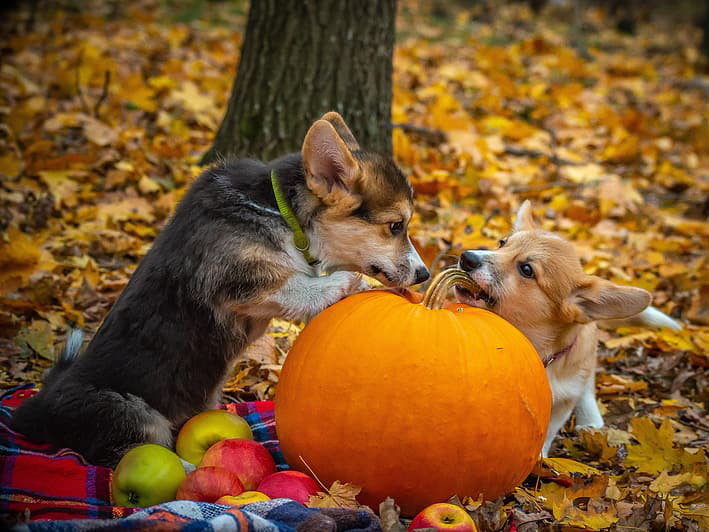Having A Pet-Safe Howl-o-ween
Holidays are enjoyable occasions for animals and owners alike, but they do provide a disruption in routine that introduces new variables into a pet’s environment.
 Rather than be haunted by the potential hazards that Halloween festivities may introduce, pet owners should be informed of possible risks before their spooky celebration so they and their pets can enjoy the night worry-free.
Rather than be haunted by the potential hazards that Halloween festivities may introduce, pet owners should be informed of possible risks before their spooky celebration so they and their pets can enjoy the night worry-free.
Kelsi Early, a third-year veterinary student and ambassador at the Texas A&M College of Veterinary Medicine & Biomedical Sciences, says that owners should take their pet’s individual dispositions into account when planning for the night, while also keeping in mind that pets may behave differently when exposed to unfamiliar situations.
“We should always take precautions when it comes to our pets and trick-or-treaters,” Early said. “Even the best-behaved pets can become spooked by the abnormal shapes from the costumes and high volumes of visitors to what they consider their space.”
Early says pet owners should keep their animals indoors on Halloween night, as the noise and excitement of visiting trick-or-treaters can act as a stressor that might cause an animal to flee. If your pet is prone to guarding the door, she also recommends hanging a sign that asks visitors to knock or leaving a candy bowl outside.
As pet owners enjoy special foods on Halloween night, they should also keep in mind that sugary treats that are enjoyable to them can be toxic if fed to pets. Most owners may be familiar with the danger of feeding chocolate to pets, but Early says that any treat high in sugar shouldn’t be fed to an animal.
“They are not able to process it in the same way that we do, so high amounts of sugar can upset their pancreas and lead to a serious condition that can require hospitalization,” she said.
Halloween decorations can also present dangers if consumed.
Early recommends that pet owners consider their furry friend’s personality when decorating. Owners of dogs that love to chew may want to keep decorations out of their pooch’s reach, while owners of cats who can’t resist pulling at strings may want to pass on fake cobwebs.
If owners plan on purchasing a costume for their pet, they should take care in placing their animal’s comfort over aesthetics. While snapping that picture of your cat dressed as a dumpling is cute, it’s not worth compromising their well-being.
“My biggest advice on costumes and pets is to take the time to truly assess your pet and their reactions to them,” Early said. “I love dressing up my dog for Halloween, but I always make sure to tailor my costume choices to his comfort.
“For example, my dog hates if anything is on his head and will instantly take it off; however, he doesn’t mind things on his body,” she said. “As a result, I make sure to stay away from any costume that might have a head piece to it, like a dragon, and stick to things that are similar to a shirt, like his current hot dog costume.”
By being aware of potential hazards that Halloween may introduce to their pet’s environment, owners can properly prepare for themselves and their pets to have a safe and worry-free night of spooky celebration.
Pet Talk is a service of the College of Veterinary Medicine & Biomedical Sciences, Texas A&M University. Stories can be viewed on the web at vetmed.tamu.edu/news/pet-talk. Suggestions for future topics may be directed to editor@cvm.tamu.edu.


